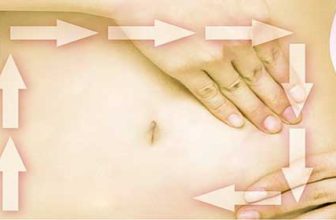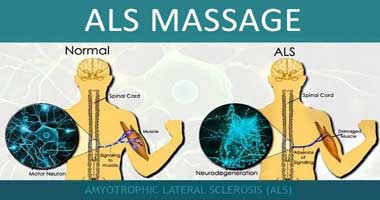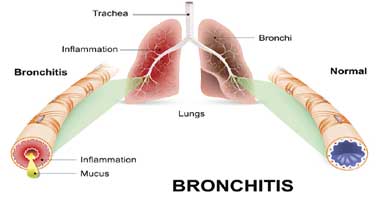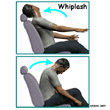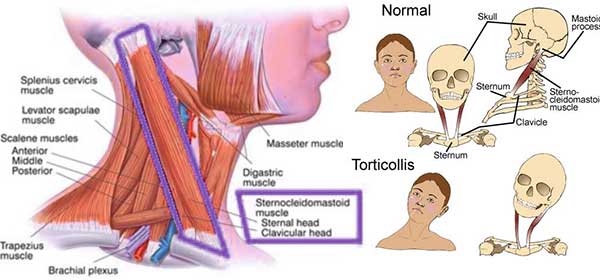
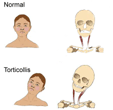 Torticollis or wry neck, is a spasm of unilateral neck muscles (especially the SCM [sternocleidomastoid muscle]) causing abnormal positioning of the head and neck.
Torticollis or wry neck, is a spasm of unilateral neck muscles (especially the SCM [sternocleidomastoid muscle]) causing abnormal positioning of the head and neck.
Acute acquired torticollis is a painful, unilateral shortening or spasm of neck muscles resulting in an abnormal head position
( Wry Neck ) Torticollis Massage Therapy Treatment Goals
– Decrease spasm, pain, abnormal position
Special / Orthopedic Tests for Torticollis
- AF and PR ROM on the neck , thorax, shoulder
- AR strength testing once the spasm has reduced
- Cervical Compression Test and Cervical Distraction Tests to differentiate cervical nerve root compression that may underlie an acute acquired torticollis
- Spurlings Test after the spasm has reduced to test for facet joint irritation
Massage Therapy Treatment for Acute Acquired Torticollis
Supine or sidelying on the affected side:
- Diaphragmatic breathing
- Treatment begins on the side that is not in spasm
- Slow, gentle effleurage and kneading to anterior, lateral, and posterior areas on the unaffected side
- Move to affected side to begin to reduce spasm
- GTO release and Origin and Insertion to all the attachments of the spasming muscle (SCM) of the affected side.
- Agonist contraction of SCM – if done gently, can cause SCM to relax. Isometric contraction of SCM by lateral flexion one way, rotation the other
- If spasm is reduced, attempt to move head SLIGHTLY to more neutral position
- Complete this pattern 3-5 times (unaffected side, affected side, attempt to neutralize head position)
- Once spasm is reduced, treat scalenes, upper trapezius, levator scapula on the affected side
- Onsite work to SCM includes gentle direct techniques such as vibrations, stroking, finger kneading, light muscle stripping, Trigger point work to SCM, pain free Passive ROM
- GTO release to suboccipitals, long axis traction, joint play
- Soothing stroking and petrissage to muscles of mastication, forehead, scalp
- Treat postural dysfunction if necessary
- Once spasm is gone, stretches may be done
Signs and Symptoms of Torticollis ( Wry Neck )
-Typical torticollis position: head and neck is side-bent TOWARD the affected side, face is rotated AWAY from the affected side, and the shoulder of the affected side is RAISED
Considerations and Contraindications for Torticollis Massage Therapy
- avoid full stretches to SCM if Vertebral artery test is positive or if client is dizzy with stretch
- avoid carotid artery when treating SCM
- acute acquired: do not passively stretch spasming muscle
- congenital torticollis – use reduced pressure on children
- spasmodic torticollis- NO painful technique, joint pay, local direct massage
Self Care for Torticollis
- Diaphragmatic Breathing
- Self-stretches to the SCM, scalene, trapezius
- Chiropractor may help with subluxations
torticollis massage, massage for torticollis, massage therapy treatment for torticollis,
